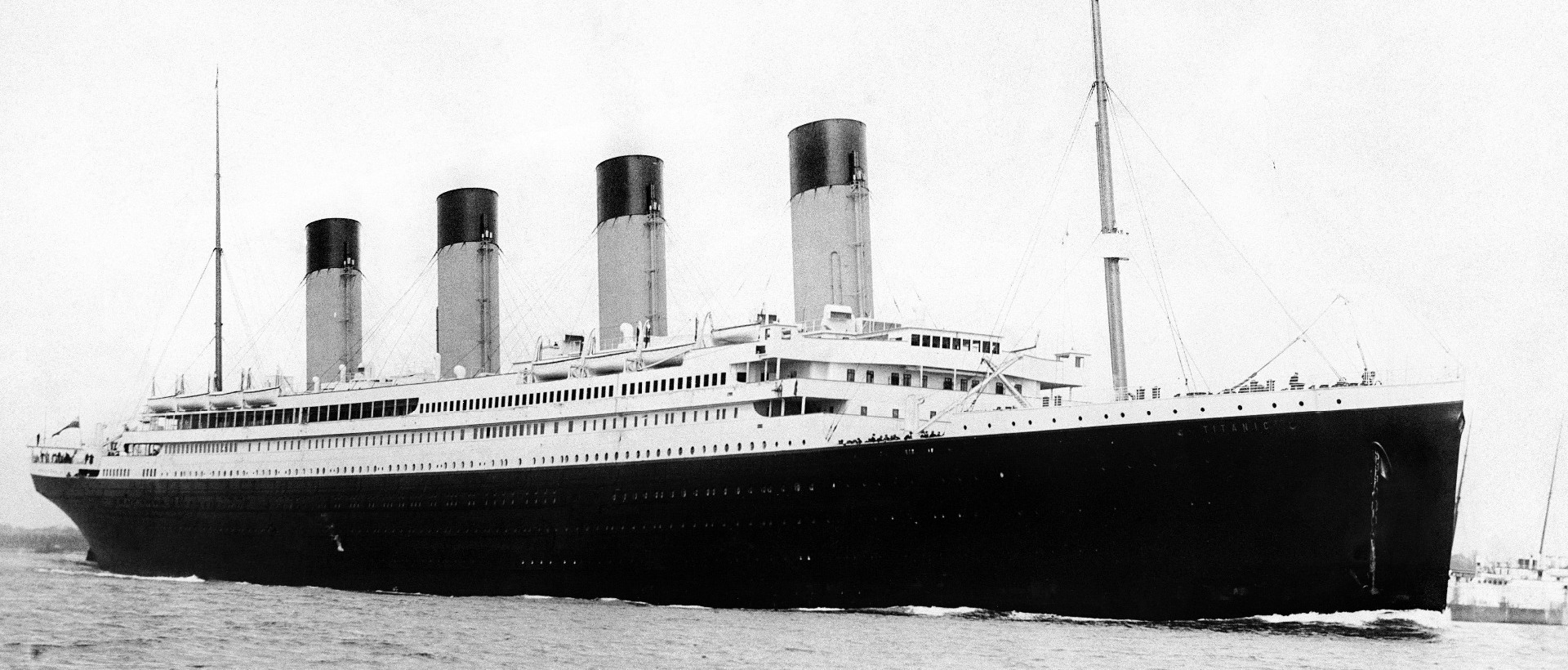Titanic: Struck an Iceberg, Shook the World
Posted on 16th April 2021
There have been worse maritime disasters but none more famous or more significant than the loss of the ‘Unsinkable’ Titanic for it destroyed in an instant the myth that man had conquered nature and brought to an end the so-called ‘Gilded Age.’
The RMS Titanic which was the largest passenger liner in the world and the pride of the White Star Line had been designed to transform trans-Atlantic travel with passengers able to sail at speed in unparalleled luxury and in absolute safety.
She had been built at the Harland and Wolff shipyard in Belfast and was intended to be the last word in opulence, less a ship than a floating hotel. There were numerous saloon bars, restaurants, dining areas, a swimming pool, sauna, Turkish bath, barber shop, library, gymnasium and squash courts. The decor and furnishings were luxurious and the journey to New York was intended to be not just a sea cruise but a memorable experience to be spoken of, reminisced upon, and relived again and again.
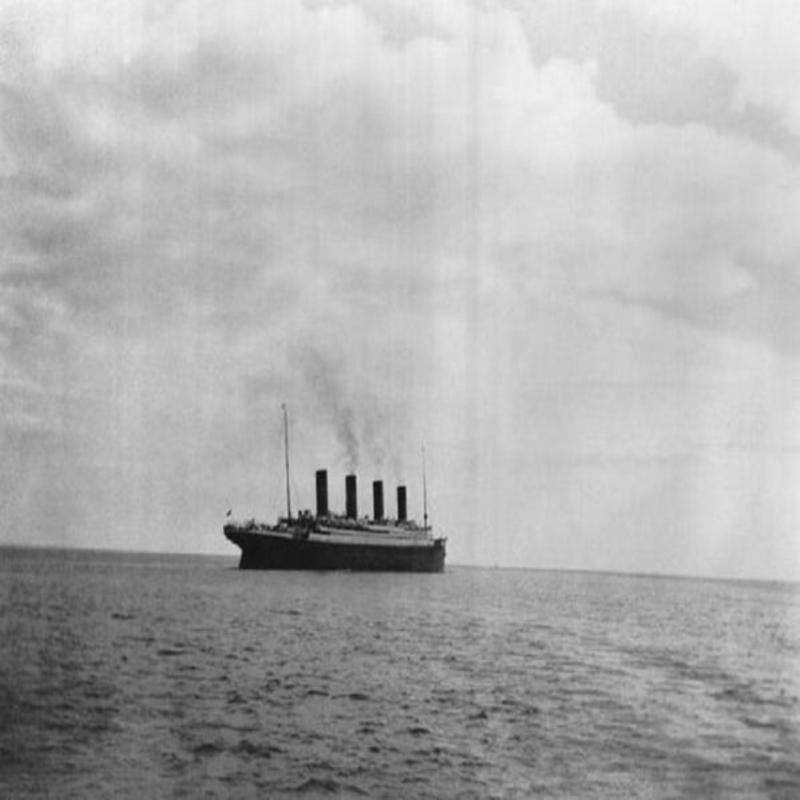
On 10 April, the RMS Titanic set sail from Southampton on her maiden voyage bound for New York, stopping at Cherbourg in France and Queenstown in Ireland on the way where she picked up additional passengers.
Though she had never been described as unsinkable by either the company or her designers she had in industry magazines and with her many safety features such as automatically closing watertight doors that could be sealed at the press of a button she was widely believed to be so, and it had been well-trumpeted that even with four of her compartments entirely flooded she would still float.
As a result of these safety features the procurement of lifeboats hardly seemed a priority and she was in fact to have only 16 with a further 4 collapsible, enough capacity for around half of the 2,240 people aboard, if full to capacity. This was more than was required by the Board of Trade and when it was suggested to the owners that they should perhaps carry more it was dismissed out-of-hand. They were after all already doing more than was required by law.
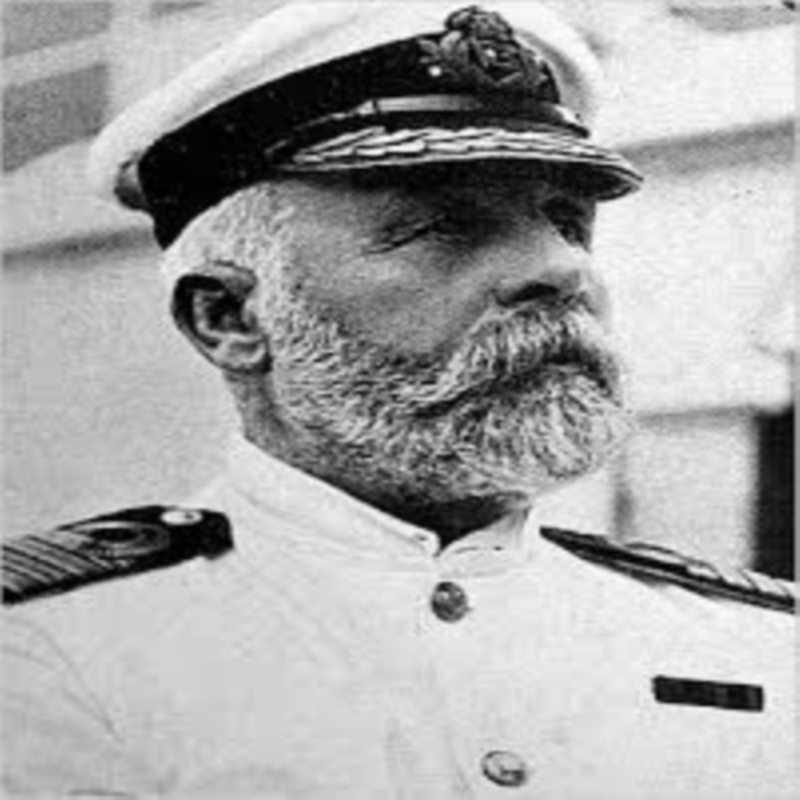
The portents for the voyage appeared ominous when she almost collided with the liner New York as she prepared to leave port and a serious accident was only averted when a tugboat managed to pull the New York away at the last moment. The Titanic's Captain, the 62-year-old Edward Smith, was much-praised for his swift action during the incident but then no less would have been expected of him. He was one of the most experienced Captain's then serving. Indeed, he was the Commodore of the White Star Line and was due to retire at the end of the Titanic's maiden voyage. His captaincy of the Titanic was a tribute to both the man and the ship.
On board the Titanic were some of the most prominent people of the age including the billionaires John Jacob Astor and Benjamin Guggenheim, the businessman Sir Cosmo Duff Gordon, the noted cricketer and President of the Pennsylvania Railway John Borland Thayer, the silent movie actress Dorothy Gibson, the Countess of Rothes, and the founder of Macy's Department Store Ishidore Strauss and his wife, Ida - the very people who dominated the society pages of newspapers around the world. Also aboard was the White Star Lines Managing Director J Bruce Ismay and the Titanic's designer Thomas Andrews, who was there to assess the ships performance. Also booked to be aboard was the ship’s owner J.P Morgan but at the last moment he had been unable to travel.
The sea-crossing had been trouble free and the Titanic had performed well though some passengers suggested at the time that they thought it was travelling too fast. Indeed, one later reported that he had heard Bruce Ismay tell Captain Smith that he wanted it to go even faster the following day. If so, then this was an odd request for calls were frequently being received that there were Icebergs in the area. These were only intermittently conveyed to the bridge however as the Radio Operators Harold Bride and Jack Phillips were inundated by messages from and for passengers which were given priority.

On the night of 14 April 1912, just before going off watch at around 21.30 Second Officer Charles Lightoller told his replacement William Murdoch to inform the Crow's Nest to keep a close watch for small icefloes.
Those on watch that night had been unable to find the binoculars and they were staring into the dark night with their naked eye. At 23.40 the lookout Frederick Fleet spotted an iceberg in their path. He sounded the ships bell and contacted the bridge with the shouted message that barely disguised his anxiety "Iceberg, right ahead." First Officer Murdoch immediately ordered hard-a-starboard and slowed the engines. This was standard practice but as it transpired was to be a deadly and tragic mistake. Had the Titanic struck the Iceberg head on then with its automatically locking bulkhead doors the likelihood is that she would have survived. As it turned out the Iceberg cut a deep gash along the side of the ship and the water rushed in quickly flooding five watertight compartments. The sheer weight of the water now meant that the ship began to lay low at the bow. As a result, the sea continued to flood in, and the other bulkheads were soon immersed in water whether they had been closed or not. A design flaw had meant that the doors did not reach to the top, as the ship sank lower the water simply flowed over from one compartment into the next.
Captain Smith alerted to the danger rushed to the bridge. He ordered that the ship's engines be stopped and asked the Titanic's designer Thomas Andrews to survey the damage. He reported back that the ship was doomed and that she had at most two hours. Captain Smith appeared stunned and asked Andrews to repeat what he had just said. He did so slowly and with deliberation so there could be no misunderstanding.
After some hesitation Captain Smith ordered the lifeboats be lowered and that it should be women and children first. But he did not yet alert the passengers, afraid of causing panic. In the meantime, the Radio Operator Jack Phillips was frantically sending out a C.Q.D message. This was the established distress signal of the time. Failing to elicit a response, on the advice of Harold Bride, he sent out the new distress code of S.O.S. It was the first time it was ever used.
Captain Smith had not given the order to abandon ship and as a result life aboard carried on much as before. Most passengers had retired to bed, but some others remained in the bars and salons. The collision with the iceberg had been noticed but had caused barely a ripple of concern. So, when the order for all passengers to attend their lifeboat stations was given it was greeted at best with mild amusement and at worst with some disgruntlement. It was after all a freezing cold night, being -2 degrees, and it was difficult to persuade the women aboard to abandon the cosiness of their cabins with their children to float around on an open boat in mid-Atlantic. As a result, many of the lifeboats were launched only half or a quarter full.
On the port side of the ship Second Officer Lightoller strictly adhered to the order women and children first. He had been issued with a revolver to help maintain order and at one point threatened to use it should men keep trying to board the lifeboats, and he had those who had forcibly removed. Only crewmen were allowed onto the boats to serve as oarsmen. On the starboard side First Officer Murdoch was more flexible and permitted men to board the lifeboats if no women were present.
The first ship to respond to Jack Phillips's increasingly frantic distress calls was the S.S Carpathia but she was 58 miles away and could not possibly arrive for another four hours and by then it would be too late. Even so, its Captain, Arthur Rostrom ordered full-steam ahead through the dangerous icefloes towards the Titanic's last known position.
However, there was another ship nearby, perhaps no more than 5 miles distance. Lt Charles Boxhall testified at the subsequent Inquiry into the disaster that this ship got so close that he could see its sidelights with his naked eye and that at the time it was steaming towards the Titanic. Some claimed that this was the steamship Californian. Its Captain, Stanley Lord was later to be made the scapegoat for the disaster.
Unable to hail the nearby ship by radio or Morse lamp, Captain Smith ordered the distress rockets to be launched at five-minute intervals. But instead of responding the ship was seen to turn and steam away.
On board the Californian Captain Lord was in bed when he was informed that rockets had been seen in the night sky. He asked his Chief Officer if he believed these were distress rockets. Having received an uncertain response he ordered that the bridge keep an eye, try to contact the ship by Morse lamp, and went back to sleep. He did not order that his Radio Operator be roused from his own slumbers and try to make contact. At 02.15 he was awoken again to be told that the ship could no longer be seen. Still, he did nothing. It wasn't until 05.30 that he ordered the Californian to steam towards its last known sighting. It was later proved that even if the Californian had responded immediately it could not have arrived in time. Even so his tardy response to others in peril at sea was to haunt Captain Lord for the rest of his life.
The Californian however had been static at sea. Captain Lord had earlier ordered a full-stop amid the icefloes until daybreak. She could not therefore have been the ship that was witnessed sailing away from the Titanic. It was later suggested that this had been the Norwegian Whaler Sampson which had been fishing illegally. But this has never been proven.
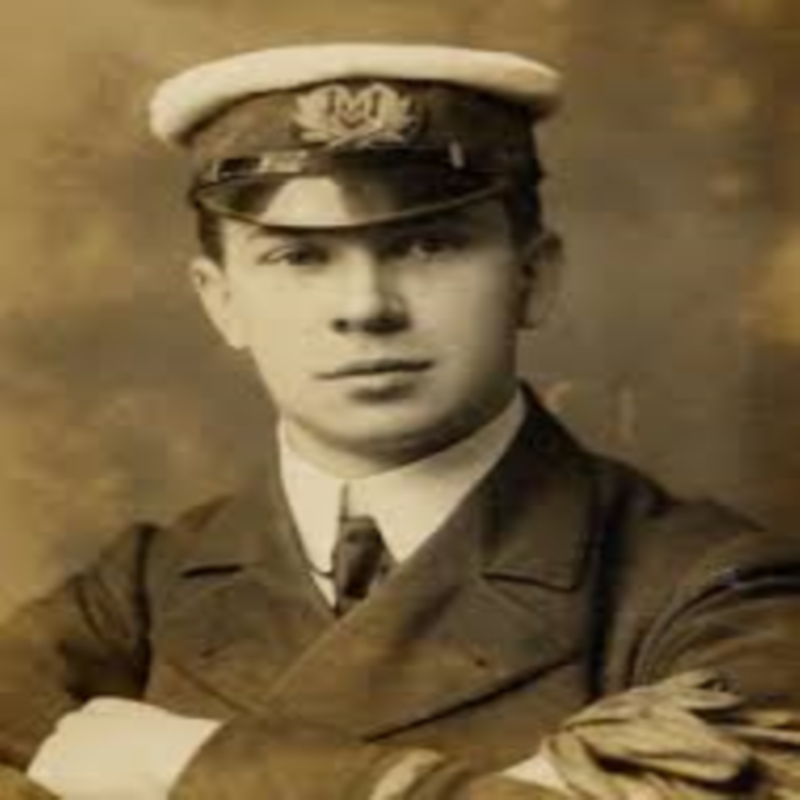
On board the Titanic Jack Phillips continued to send his distress calls and the crewmen in the boiler room continued to stoke the fires in order to ensure that the lights remained on for as long as possible. Meanwhile on deck the last remaining women and children among the First- and Second-Class Passengers were being loaded aboard the lifeboats.
Ida Strauss refused to enter a lifeboat despite her husband’s insistence that she should do so. She told him, "We have lived together for many years. Where you go, I go." They both drowned.
John Jacob Astor helped his pregnant wife aboard a lifeboat and then politely asked if, given his wife's delicate condition, he could join her. Second Officer Lightoller refused as long as there remained women and children to be safely evacuated. He thanked Lightoller, waved to his wife and departed. He too drowned.
Benjamin Guggenheim and his Manservant made no attempt to escape the ship. Instead, they helped the women and children into the boats before retiring to their cabins to change. Guggenheim told a crewman "We have dressed up in our best, and are prepared to go down like gentlemen."
Sir Cosmo Duff Gordon secured a place for himself and his wife the noted fashion designer Lucy Sutherland in Lifeboat One. It had been lowered into the water with only twelve people aboard, seven of whom were crewmen. They were to grumble that they had left all their possessions on the Titanic and Duff Cooper was to pay them £5 each as compensation. It was later suggested that he had effectively bribed the crew not to return to the wreckage -Lifeboat One was to be disparagingly referred to as the Money Boat.
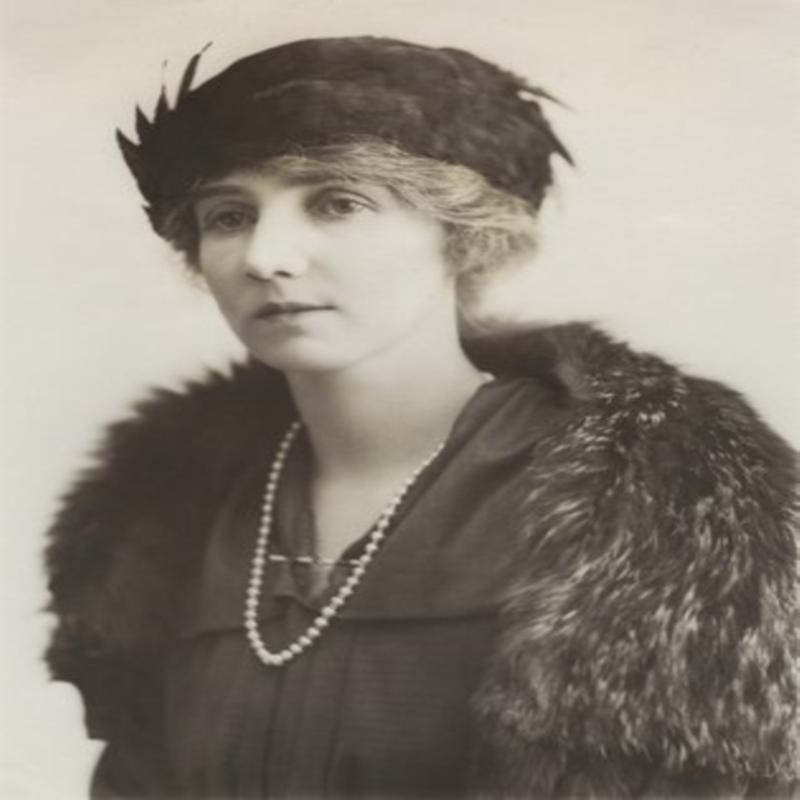
The Countess of Rothes who along with her maid survived the sinking made such a fuss about having to abandon the ship in the dead of night and complained so bitterly about the cold that she was given the tiller of the lifeboat just to keep her occupied and shut her up.
John Borland Thayer had refused to enter a lifeboat and was last seen looking very scared and tightly gripping the mid-ship rail.
Dorothy Gibson had escaped on the first lifeboat launched. Later that year she was to make a movie based on her experience of the sinking wearing the same clothes she had worn that fateful night.
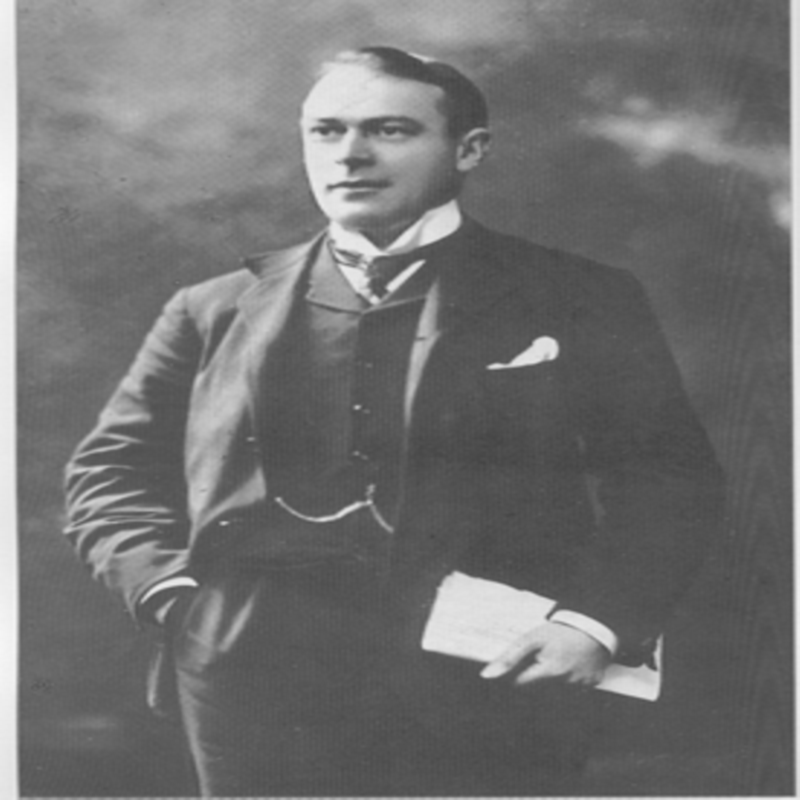
Thomas Andrews, who was seen with the plans to the ship tucked under his arm, toured the decks explaining to people the urgency of boarding the lifeboats. He was last spotted in the ship’s lounge staring vacantly at a portrait of Plymouth Sound.
By 01.00 most of the lifeboats had been launched and it had by now become evident to everyone on board that the Titanic with its bow rising high out of the water was going to sink. It was now that panic began to break out and there was a rush towards the few remaining lifeboats.
Fearing that this panic would spread and that they could not be expected to behave with any decorum Third Class passengers remained locked in steerage and it wasn't until the last lifeboat had been launched that they were finally released. They rushed up towards the deck trampling on one another as they did so only to find the lifeboats gone and the ship in its death throes. It was reported that they had panicked as anticipated and that shots had to be fired to maintain some semblance of order. Indeed, for many years after it was suggested that the Anglo-Saxons aboard had behaved well but that the Irish, Jews and Italians aboard had sullied the whole affair with their cowardice. If it was true that they panicked then it is hardly surprising, kept below decks in fading light as the ship listed heavily and with water up to their waist.
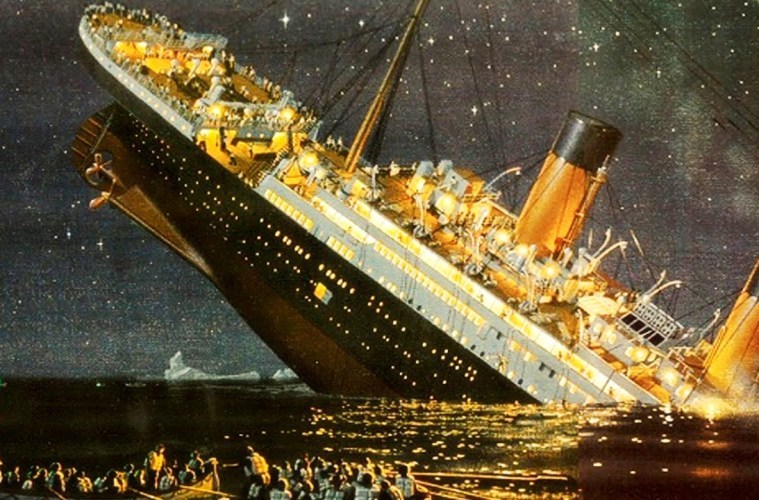
People now began to throw themselves from the ship but with the temperature of the water below freezing life expectancy was less than twenty minutes. By 02.05 the Titanic's bow was entirely out of the water and her lights had at last failed and she had been plunged into darkness. They were to briefly flicker on again as she began to slip beneath the waves. By 02.20 she had gone.
Second Officer Lightoller was still aboard the Titanic as she sank; with the waves lapping over her decks, he simply swam away and finding an upturned collapsible clambered aboard. Also clinging to the collapsible were Radio Operators Harold Bride and Jack Phillips who had continued to send out distress calls to the very last moment. Phillips did not survive, and Harold Bride was to say, "I learned to love that man in those final moments."
Fourth Officer Boxhall oversaw the final lifeboat to leave Titanic at 01.45. It had only 18 people aboard out of a capacity of 40. First Officer Murdoch went down with the ship, though it was later reported that he had in fact shot himself.
Those in the lifeboats later said that they could hear the strains of the band playing Nearer Thy God to Thee as she began to slip beneath the waves. None of the band members survived.
Captain Smith was last seen helping a young child into a lifeboat before being washed from the deck though some later said that they had seen him near a collapsible but that he had chosen to swim away from it. His body was never recovered.
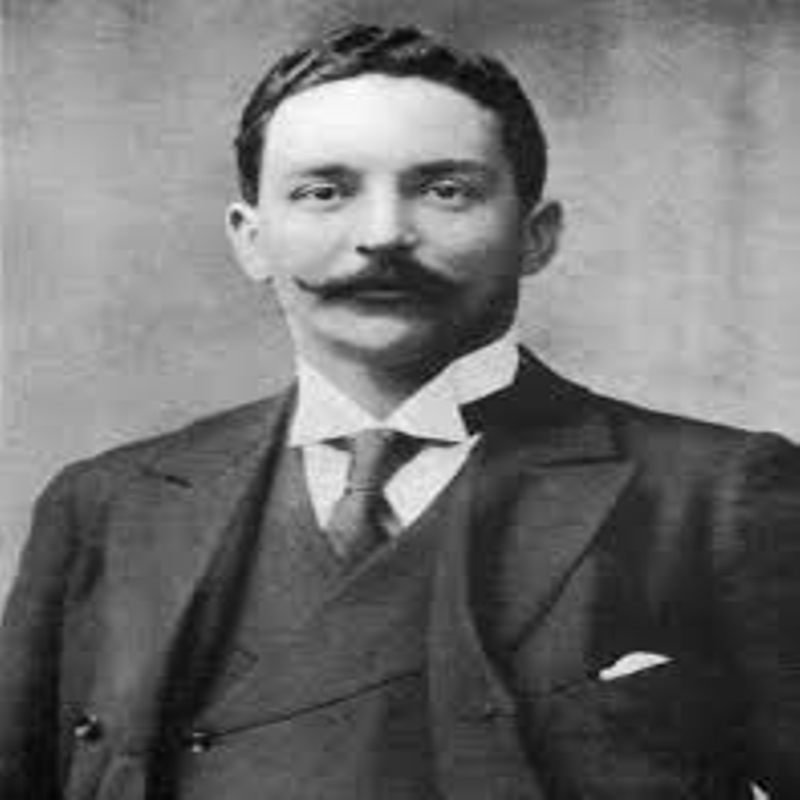
J Bruce Ismay, the Managing Director of the White Star Line did manage to procure himself a place in a lifeboat and by doing so became the most despised men in the world. It was even suggested that he had disguised himself as a woman in a shawl and wearing a bonnet. His survival was an act of cowardice and flew in the face of Captain Smith's demand "To be British!" Ismay survived but his reputation was in tatters. When years later his racehorse won the prestigious Epsom Derby, it was disqualified solely on the grounds that it belonged to J Bruce Ismay.
The Titanic did not go quietly. The sound of the ship as it shuddered and broke apart and the terrible cries of the terrified passengers still on board were to haunt those safely in the lifeboats for the rest of their lives. Despite the pleas of some women desperate to find their husbands few of the lifeboats returned to pick up survivors, afraid of being swamped. Even the few that did return only did so when the screams of those struggling in the water had died away. Only seven survivors were to be plucked from the water and of these two later died.
Of the 2,240 passengers and crew on board the Titanic that fateful night 1,517 drowned or died of hypothermia. When the figures emerged of those who survived and those who had died it reflected the social divisions that marked out Edwardian society. Of the First-Class passengers aboard the Titanic 60.5% survived, Second Class 41.7%, but only 24.5% of Third Class passengers.
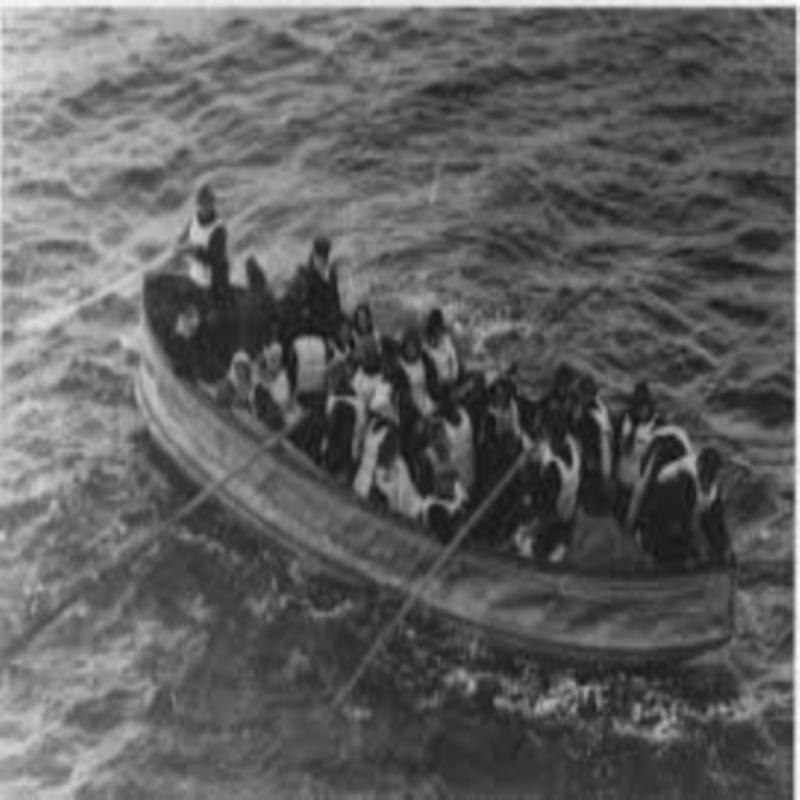
The Carpathia arrived on the scene at around 04.00 just under two hours after the Titanic sank beneath the waves. The survivors were taken from the lifeboats and provided with blankets and a mug of tea. She then took three days, slowed by ice packs and a descending mist, to steam to New York. When she arrived at Pier 54 at 21.30 on 18 April in pouring rain, she was greeted by 40,000 anxious people cramming the quayside.
They were to be shocked by the condition of the survivors’ pale, shivering and clearly traumatised by their experience. They were to be even more shocked when the full list of victims was released. For in the time that it had taken the Carpathia to reach New York it had been reported that though the Titanic had hit an iceberg there had been no loss of life and even as late as 18 April it was rumoured that the crippled ship was being towed to safety by the S.S Virginia.
Inquiries were held into the disaster in both New York and London. The London Inquiry, presided over by Lord Mersey, was largely held to be a whitewash. The White Star Line was found not culpable in any way and that the sinking was the result of a tragic accident. Stanley Lord, the Captain of the Californian was criticised for his neglect and lack of urgency and the opportunity was taken to lay most of the blame for the huge loss of life on him. He was to deny that he had done anything wrong, and it wasn't to be until some forty years later that he was finally cleared of any responsibility.
The city of Southampton, the port from which Titanic had set sail on her tragic maiden voyage was devastated. Most of the ship’s crew had been recruited from the city and more than 500 households had lost someone and often they were the family's sole breadwinner. As the White Star Line was not found culpable the families received no compensation. Indeed, those crew members who had survived were later billed for damaged uniforms and the loss of White Star property.
Tagged as: Modern
Share this post:





